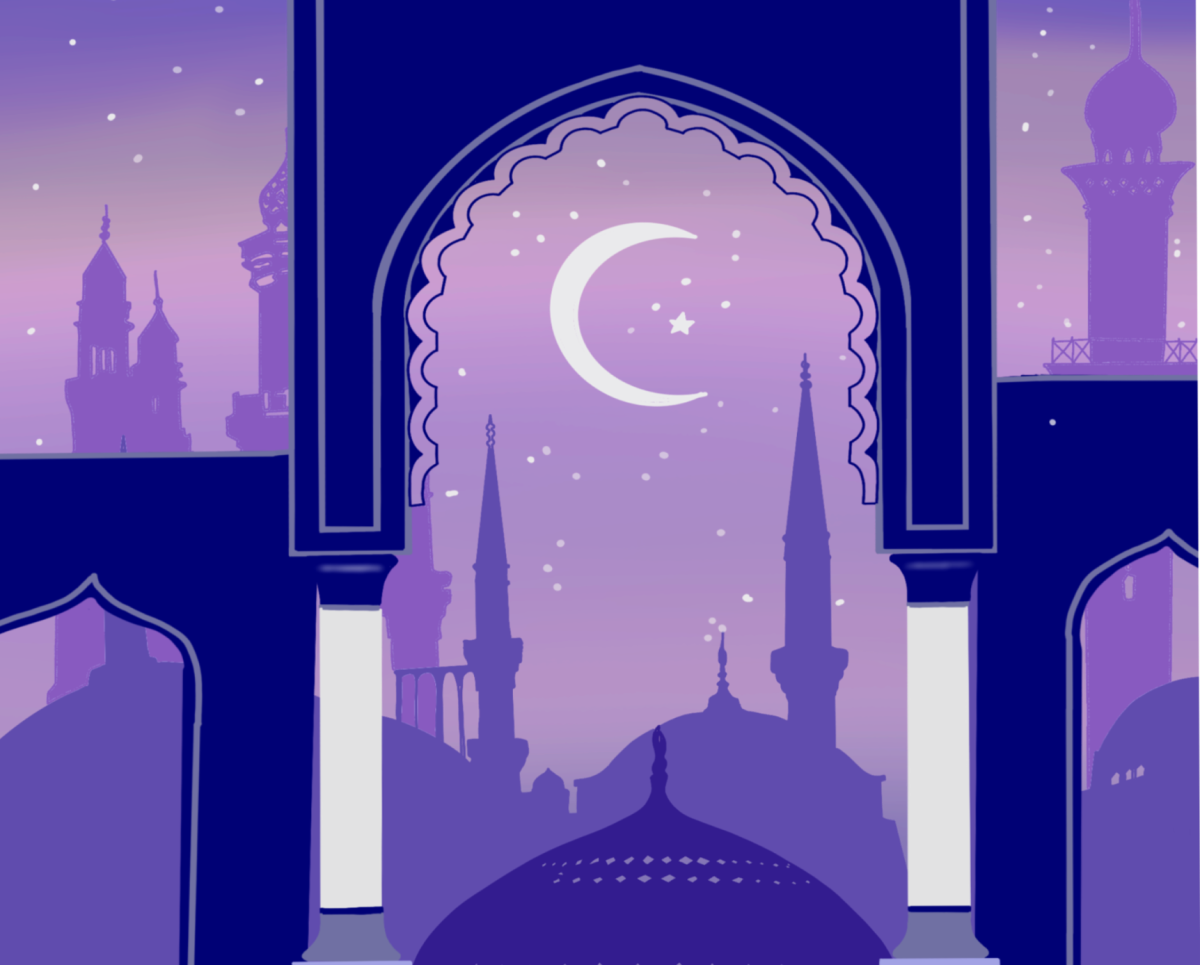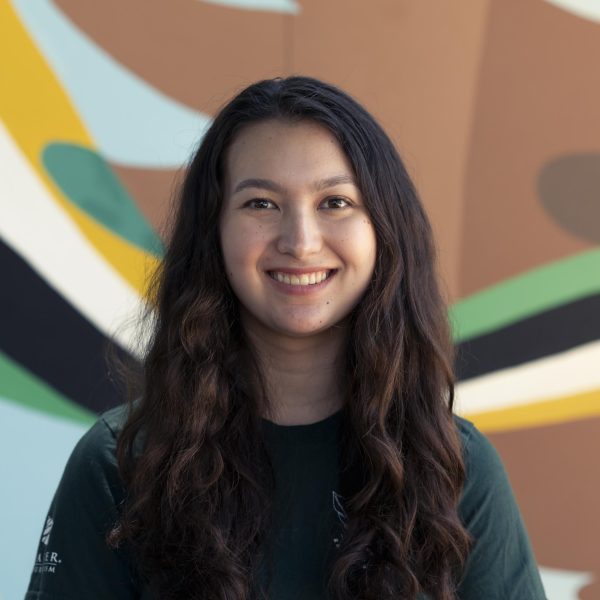Millions across the world turned to the sky tonight, awaiting the first sighting of the new crescent moon. As the pale white glow emerged from the clouds and replaced the setting sun, cheers erupted, and people rushed to make preparations for Ramadan.
Ramadan, the holiest month in the Muslim calendar, will take place this year from Mar. 10 to Apr. 9. Over the thirty days, those who are physically able will fast from sunrise to sunset, fulfilling one of the five pillars of Islam, sawm.
Traditionally, observers begin their day with prayer and suhoor, a morning meal. In the evening, Muslims typically break their fast and begin the evening iftar meal by eating a date, as is sunnah, or the way of the Prophet Muhammad.
Fasting can physically wear on the body. Low energy from disrupted meals can compound drowsiness after staying up to pray taraweeh, the specialized evening prayer. Sophomore Judi Abdelrazik, who fasts every Ramadan, spoke to these hurdles for observant students at Harker.
“It’s always been really easy for me, prayers and fasting, until [high school],” Judi said. “With a lot more schoolwork, it’s harder to pray taraweeh at night. With tests, I have to fast accordingly. Tests take priority over fasting, because I can’t retake tests.”
Upper school English teacher and diversity leader Susanne Salhab recommended students communicate with teachers regarding these challenges.
“Teachers should let their students know that if anyone plans to fast Ramadan they should reach out to their instructors,” Salhab said, “If a Muslim student comes forward, teachers could ask how they could best support the student during the month and perhaps consider allowing fasting students to take assessments in the morning and offer some leniency with deadlines.”
The month contains many significant events in the Muslim calendar, like Laylat al-Qadr, the “Night of Power.” The holiday, which occurs midway through Ramadan, commemorates the day Gabriel revealed the Quran to the Prophet Muhammed. Salhab said she celebrated Laylat al-Qadr for the first time while living in Jerusalem in eleventh grade.
“One of the most incredible moments of my life emerged during the Laylat al-Qadr,” Salhab said. “My family and I, along with thousands of people prayed in the third holiest site in Islam, the Dome of the Rock. I’ll never forget the experience. To see everyone praying together, in unison, was such a powerful moment.”
Ramadan culminates with Eid al-Fitr on the final day of fasting, one of the most important holidays in the Islamic calendar. People celebrate Eid differently all over the world, but common themes center around community, family and charity, a pillar of Islam.
Muslim Students Association Co-President Reza Jalil (12) celebrates Eid each year.
“It’s more than a family, it’s a community event,” Reza said. “A lot of these people we only meet at events like these, so it’s really fun to get to see them. After all the fasting, and all the hardship, you get to celebrate together. Everyone is always looking forward to the party.”
Fellow MSA Co-President Minal Jalil (10) echoed Reza’s sentiment, emphasizing her connection to her community during Ramadan.
“I definitely feel most connected to Islam and my identity as Muslim during Ramadan,” Minal said. “Fasting is something that consumes your whole day. You’re not constantly thinking about not eating, but it’s something you have to be aware about all day. Praying more often, [doing] everything that you’ve been taught to do when you were younger; I just feel very connected.”




![LALC Vice President of External Affairs Raeanne Li (11) explains the International Phonetic Alphabet to attendees. "We decided to have more fun topics this year instead of just talking about the same things every year so our older members can also [enjoy],” Raeanne said.](https://harkeraquila.com/wp-content/uploads/2025/10/DSC_4627-1200x795.jpg)


















![“[Building nerf blasters] became this outlet of creativity for me that hasn't been matched by anything else. The process [of] making a build complete to your desire is such a painstakingly difficult process, but I've had to learn from [the skills needed from] soldering to proper painting. There's so many different options for everything, if you think about it, it exists. The best part is [that] if it doesn't exist, you can build it yourself," Ishaan Parate said.](https://harkeraquila.com/wp-content/uploads/2022/08/DSC_8149-900x604.jpg)




![“When I came into high school, I was ready to be a follower. But DECA was a game changer for me. It helped me overcome my fear of public speaking, and it's played such a major role in who I've become today. To be able to successfully lead a chapter of 150 students, an officer team and be one of the upperclassmen I once really admired is something I'm [really] proud of,” Anvitha Tummala ('21) said.](https://harkeraquila.com/wp-content/uploads/2021/07/Screen-Shot-2021-07-25-at-9.50.05-AM-900x594.png)







![“I think getting up in the morning and having a sense of purpose [is exciting]. I think without a certain amount of drive, life is kind of obsolete and mundane, and I think having that every single day is what makes each day unique and kind of makes life exciting,” Neymika Jain (12) said.](https://harkeraquila.com/wp-content/uploads/2017/06/Screen-Shot-2017-06-03-at-4.54.16-PM.png)








![“My slogan is ‘slow feet, don’t eat, and I’m hungry.’ You need to run fast to get where you are–you aren't going to get those championships if you aren't fast,” Angel Cervantes (12) said. “I want to do well in school on my tests and in track and win championships for my team. I live by that, [and] I can do that anywhere: in the classroom or on the field.”](https://harkeraquila.com/wp-content/uploads/2018/06/DSC5146-900x601.jpg)
![“[Volleyball has] taught me how to fall correctly, and another thing it taught is that you don’t have to be the best at something to be good at it. If you just hit the ball in a smart way, then it still scores points and you’re good at it. You could be a background player and still make a much bigger impact on the team than you would think,” Anya Gert (’20) said.](https://harkeraquila.com/wp-content/uploads/2020/06/AnnaGert_JinTuan_HoHPhotoEdited-600x900.jpeg)

![“I'm not nearly there yet, but [my confidence has] definitely been getting better since I was pretty shy and timid coming into Harker my freshman year. I know that there's a lot of people that are really confident in what they do, and I really admire them. Everyone's so driven and that has really pushed me to kind of try to find my own place in high school and be more confident,” Alyssa Huang (’20) said.](https://harkeraquila.com/wp-content/uploads/2020/06/AlyssaHuang_EmilyChen_HoHPhoto-900x749.jpeg)






